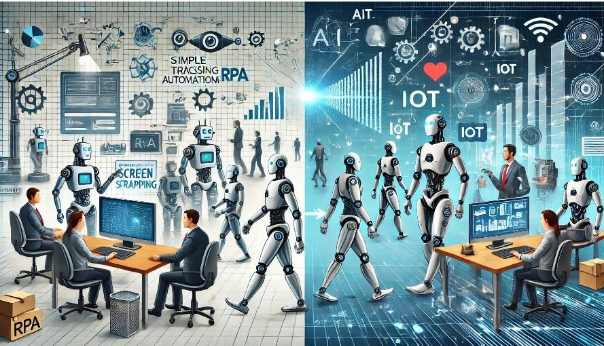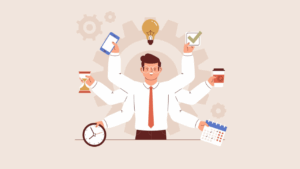Overview
The Internet of Things (IoT) and robotic process automation (RPA) are transforming several industries by enabling better, more efficient automation. While RPA is generally focused on automating repetitive, rule-based tasks, IoT enables real-time data collection and communication between linked devices. RPA and IoT are two technologies that can be utilized to link to the physical and digital worlds. Combining these technologies adds a new level of intelligence, dynamic ability, and process optimization for both digital and physical processes to automation. The combination of robotic process automation (RPA) and the Internet of Things (IoT) is revolutionizing how businesses automate activities.
In the modern world, companies look for creative methods to increase productivity, cut expenses, and streamline processes. The Internet of Things (IoT) and robotic process automation (RPA) are two technologies that have completely changed automation. Even if each of these technologies is strong on its own, when they are combined, a synergy is produced that makes automation systems more intelligent and flexible.
RPA-IoT Integration Benefits
By utilizing IoT’s real-time data on machinery, surroundings, and processes to optimize efficiency, RPA and IoT integration improve operational excellence. Up to 80% of repetitive jobs in sectors including manufacturing, retail, and healthcare are automated, reducing the amount of physical labor required. For example, RPA-enabled IoT pillboxes automatically remind users to refill. Furthermore, the integration guarantees immediate responses to important events. For example, RPA bots process data, validate claims, and alert emergency services when necessary, while IoT sensors are used to analyze damage in insurance claims.

Important Uses for RPA-IoT Integration
With applications like compliance monitoring, where IoT cameras guarantee safety requirements and RPA bots record infractions, RPA-IoT integration revolutionizes businesses. IoT sensors identify product flaws in quality control, and RPA confirms norms. With RPA predicting maintenance requirements, predictive maintenance leverages IoT’s real-time equipment monitoring.
In agriculture, IoT sensors provide automated harvesting by alerting farmers or turning on smart gear, while soil sensors use RPA scheduling to guide intelligent watering. Supply chain optimization encompasses fleet management with real-time shipment tracking, inventory management with IoT tracking, and RPA-automated replenishment.
Smart thermostats for energy-efficient temperature control and RPA bots analyzing IoT camera data for comprehensive listings benefit real estate. IoT sensors and RPA bots are used in smart cities for water management and power outage notifications. IoT keeps an eye on wells and pipelines in the energy sector, and RPA makes sure that regular maintenance is done for safe operations.

Future Prospects and Difficulties of RPA-IoT Integration
Notwithstanding its advantages, RPA-IoT integration has drawbacks, such as controlling high upfront expenditures with rigorous ROI planning, negotiating technical complexity, and guaranteeing precise IoT data quality. But when combined, they have transforming power.
By using IoT data for tasks like traffic control and predictive maintenance, RPA and IoT will eventually enable smarter, real-time choices, lowering costs and downtime. They will improve customer experience with quicker, more individualized services and provide end-to-end automation, from health monitoring to shipment tracking. As automation optimizes resources and reduces waste in complex systems like smart grids, scalability will increase.
A connected, creative, and sustainable society will be fueled by cooperation with AI and Blockchain, which will further enhance automation, security, and efficiency.
In conclusion
Combining RPA and IoT is a significant automation advancement. It changes how industries function by enabling organizations to use real-time data to make better decisions, save manual labor, increase efficiency, and react swiftly. By using this combination now, organizations may increase innovation, save money, and enhance operations, resulting in a more connected and efficient future.







